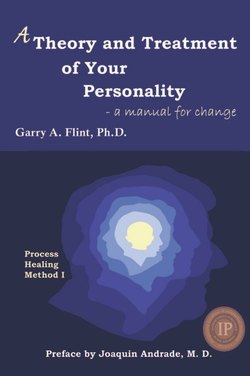Читать книгу A Theory and Treatment of Your Personality - Garry Flint - Страница 19
На сайте Литреса книга снята с продажи.
Summary
ОглавлениеA language process starts forming in utero and later becomes our subconscious. By explaining how the subconscious and the personality are formed, one can get rapport with the subconscious and all aspects of the personality. The subconscious is useful to direct the path of treatment, to help create new ways to treat difficult issues, to organize treatment plans, and to learn how to treat the effect of trauma. In addition, the subconscious can learn how to treat negative experiences automatically and independently of the Main Personality. The subconscious can treat active memories (negative beliefs, simple memories and life experiences) in different ways. The subconscious can apply these techniques to treat unknown trauma in a person’s history, such as self-limiting beliefs and other traumatic experiences and memories. While this form of treatment lacks support from published research, it has been effective for scores of patients treating themselves, as well as patients in my office and patients in clinics in Latin America.
The Process Healing Method is a treatment intervention that developed out of my relationship with my various patients’ subconsciouses. To summarize the process, the therapist first educates and works with all aspects of the personality to convince the aspects to want to receive treatment and join with the Main Personality. This approach is both respectful to the patient and makes later treatment easier. I call the process of getting parts on the Treatment Team the Education Process. The goal is to get all aspects of the personality to want to be treated and join the Treatment Team. During this process, the patient learns a way to communicate with the subconscious and aspects of the personality. When all aspects are on the Treatment Team and give permission, the therapist then teaches the subconscious how to treat painful emotions. Then in the treatment process, the patient or therapist asks the subconscious to treat painful or problematic issues.
This tale started in October 1991. By 1994, I was teaching the Process Healing Method to my patients by modeling the tapping treatment process. At first, I physically showed each of the acupressure treatment points to the subconscious, point by point. Now, a 30-second metaphor, which always works, teaches the treatment process. The next chapter, Chapter 2, introduces and gives an overview of the theory and procedure of Process Healing. It includes a transcript of the first session of the Process Healing Method and several examples of treatment interventions. Chapter 3 describes the entire basic procedure for getting all parts on the Treatment Team and teaching the subconscious the treatment method. The procedure to obtain rapport with the subconscious and all parts is now routine. In Chapter 4, I give detailed examples of many useful treatment interventions and aids. I use these treatment interventions routinely with most patients.
The theory of the development of the personality and memory structures is presented in Chapter 5. This is the most challenging chapter in the book. This knowledge is useful when problem-solving new structures and finding solutions for complex personality issues. Chapter 6 will teach you how to problem-solve and resolve difficult or complex barriers to treatment. Many readers won’t have to solve complex problems, but the interventions are included for those who do. Chapter 7 describes the treatment of dissociative and amnesic parts and all the complexities that can arise when treating parts. Chapter 8 introduces the more complex features of memory, namely memory structures and other constructs. These structures and constructs were discovered while solving patients’ issues and are frequently found to be the cause of problematic behavior and unusual experiences. Chapter 9 describes many treatments that are useful for relatively simple issues. Chapter 10 focuses on several complex disorders like depression, addictions, obsessive-compulsive behavior, psychotic behavior, and so forth. Chapters 9 and 10 are written primarily for therapists.
Now you know how my patients taught me and helped me learn a new respectful and effective treatment intervention. For those who have read some books about psychology and have opinions about brain, mind, and behavior, I want to point out what I think may be a paradigm shift for some readers. If you can suspend your previous learning and research-based ideas and accept the clinically based truisms presented here, this book offers a refreshing description of the development of the personality and explanations for complex mental issues. Here are what I consider to be the major shifts in beliefs.
1. The subconscious is accessible in everyone. It is not the unconscious. The subconscious is a unique process, with whom a therapist can communicate.
2. Dormant memories are available to be triggered into activity in the conscious or unconscious. They are not located in the unconscious.
3. Behavior and all brain activity are collages assembled from previously learned memories active in the conscious and unconscious.
4. Dissociation causes the conscious and unconscious experience of active memories.
5. Memories that are dissociated and cause intrusions are different than amnesic parts. They are more like dissociated skills and, most importantly, don’t have executive function. Amnesic parts, on the other hand, are compartmentalized memory structures (Blizard, et al., 2005) created in novel, severe trauma who have executive function.
6. Different processes cause dissociative and amnesic parts.
I hope you find this book both fascinating and useful, personally or professionally.
